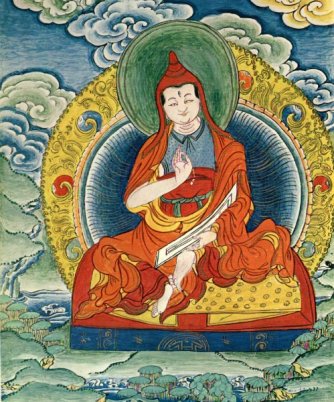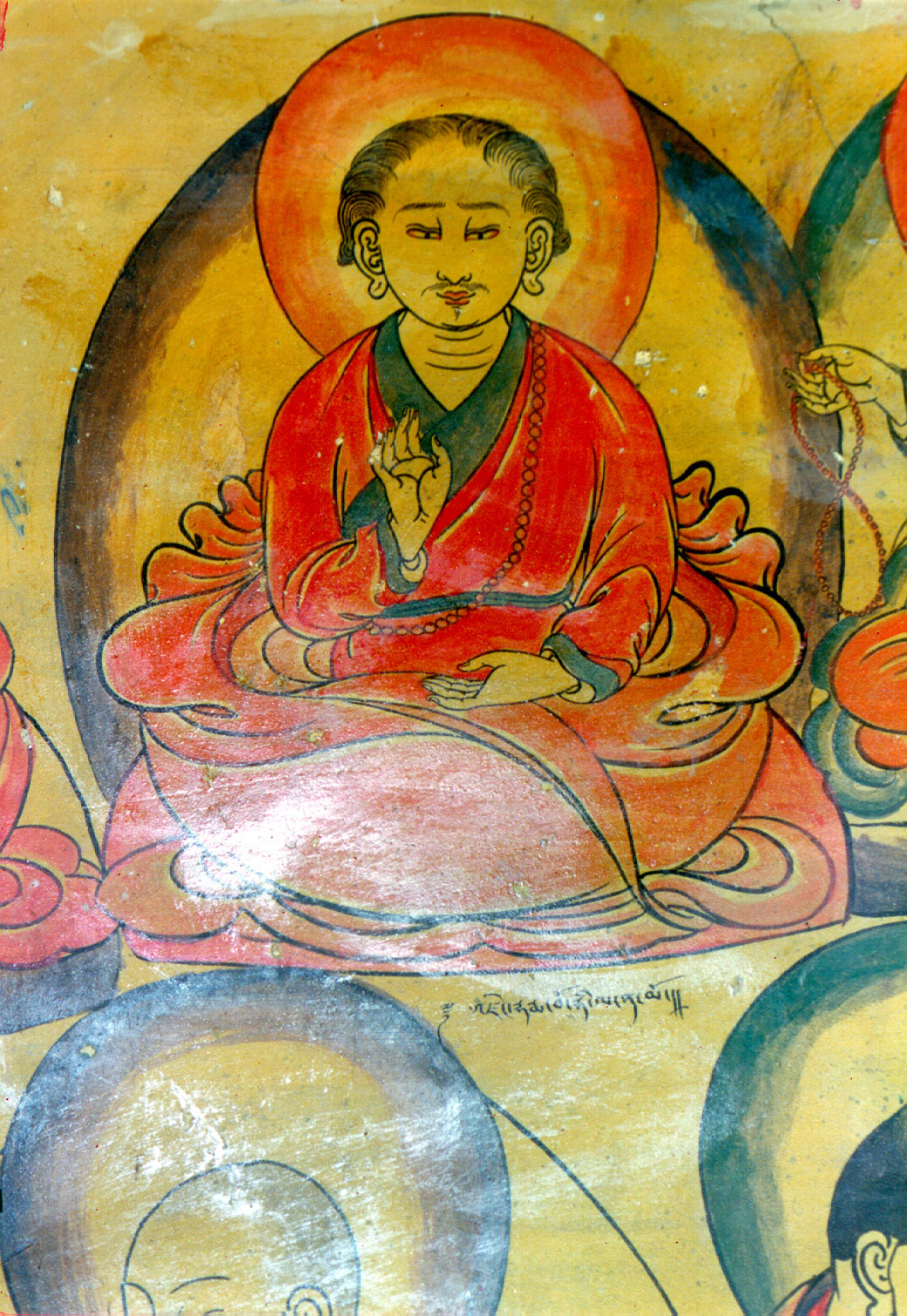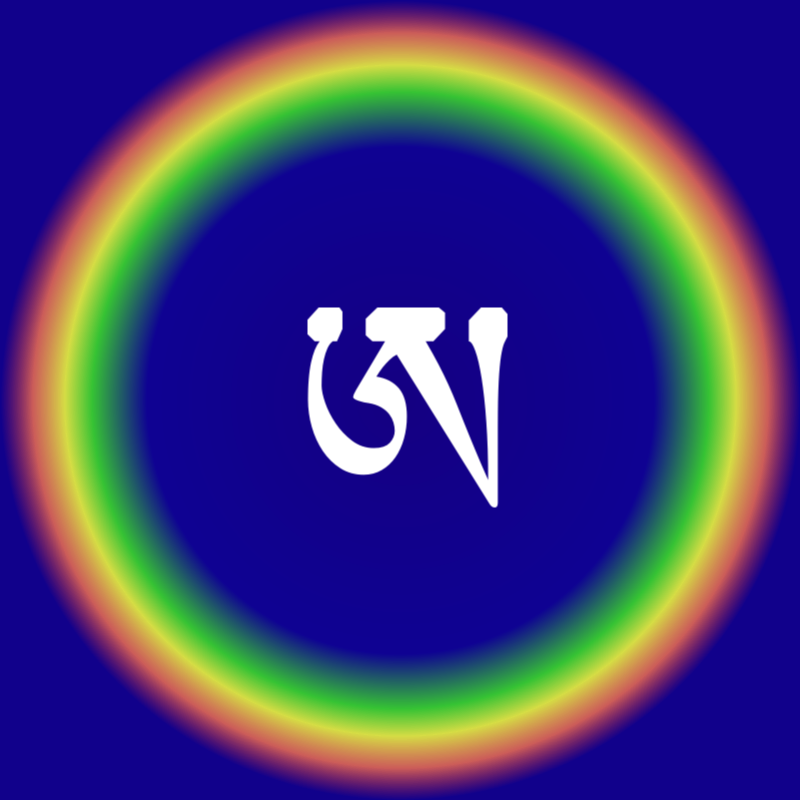|
Vairotsana
Vairotsana () was a lotsawa or "translator" living during the reign of King Trisong Detsen, who ruled 755-97 CE. Vairotsana, one of the 25 main disciples of Padmasambhava, was recognized by the latter as a reincarnation of an Indian pandita. He was among the first seven monks ordained by Śāntarakṣita, and was sent to Dhahena in India to study with Śrī Siṅgha, who taught him in complete secrecy. Śrī Siṅgha in turn entrusted Vairotsana with the task of propagating the semde and longdé sections of Dzogchen in Tibet. He is one of the three main masters to bring the Dzogchen teachings to Tibet, the two others being Padmasambhava and Vimalamitra, and was also a significant lineage holder of trul khor. Shechen Gyaltsab mentions in his ''Pond of White Lotus Flowers'' that before meeting Śrī Siṅgha, Vairotsana had met the wisdom forms of the two vidyadharas Garab Dorje and Mañjuśrīmitra in a miraculous pagoda at Dhahena. After he had presented a huge offering ... [...More Info...] [...Related Items...] OR: [Wikipedia] [Google] [Baidu] |
Vairotsana
Vairotsana () was a lotsawa or "translator" living during the reign of King Trisong Detsen, who ruled 755-97 CE. Vairotsana, one of the 25 main disciples of Padmasambhava, was recognized by the latter as a reincarnation of an Indian pandita. He was among the first seven monks ordained by Śāntarakṣita, and was sent to Dhahena in India to study with Śrī Siṅgha, who taught him in complete secrecy. Śrī Siṅgha in turn entrusted Vairotsana with the task of propagating the semde and longdé sections of Dzogchen in Tibet. He is one of the three main masters to bring the Dzogchen teachings to Tibet, the two others being Padmasambhava and Vimalamitra, and was also a significant lineage holder of trul khor. Shechen Gyaltsab mentions in his ''Pond of White Lotus Flowers'' that before meeting Śrī Siṅgha, Vairotsana had met the wisdom forms of the two vidyadharas Garab Dorje and Mañjuśrīmitra in a miraculous pagoda at Dhahena. After he had presented a huge offering ... [...More Info...] [...Related Items...] OR: [Wikipedia] [Google] [Baidu] |
Trul Khor
''Trul khor'' ('magical instrument' or 'magic circle;' Skt. ), in full ''tsa lung trul khor'' ( sa, vayv-adhisāra 'magical movement instrument, channels and inner breath currents'), also known as yantra yoga, is a Vajrayana discipline which includes pranayama (breath control) and body postures (asanas). From the perspective of the Indo-Tibetan Buddhist traditions of Dzogchen, the mind is merely ''vāyu'' (breath) in the body. Thus working with ''vāyu'' and the body is paramount, while meditation, on the other hand, is considered contrived and conceptual. Namkhai Norbu Rinpoche (1938-2018), a proponent of trul khor, preferred to use the equivalent Sanskrit-derived English term 'yantra yoga' when writing in English. Trul khor derives from the instructions of the Indian mahasiddhas (great sages) who founded Vajrayana (3rd to 13th centuries CE). Trul khor traditionally consists of 108 movements, including bodily movements (or dynamic asanas), incantations (or mantras), pr ... [...More Info...] [...Related Items...] OR: [Wikipedia] [Google] [Baidu] |
Padmasambhava
Padmasambhava ("Born from a Lotus"), also known as Guru Rinpoche (Precious Guru) and the Lotus from Oḍḍiyāna, was a tantric Buddhist Vajra master from India who may have taught Vajrayana in Tibet (circa 8th – 9th centuries)... According to some early Tibetan sources like the ''Testament of Ba'', he came to Tibet in the 8th century and helped construct Samye Monastery, the first Buddhist monastery in Tibet. However, little is known about the actual historical figure other than his ties to Vajrayana and Indian Buddhism. Padmasambhava later came to be viewed as a central figure in the transmission of Buddhism to Tibet. Starting from around the 12th century, hagiographies concerning Padmasambhava were written. These works expanded the profile and activities of Padmasambhava, now seen as taming all the Tibetan spirits and gods, and concealing various secret texts ('' terma'') for future tertöns. Nyangral Nyima Özer (1124–1192) was the author of the ''Zangling-ma'' (Jew ... [...More Info...] [...Related Items...] OR: [Wikipedia] [Google] [Baidu] |
Lotsawa
Lotsawa () is a Tibetan word used as a title to refer to the native Tibetan translators, such as Vairotsana, Rinchen Zangpo, Marpa Lotsawa, Tropu Lotsawa Jampa Pel and others, who worked alongside Indian scholars or panditas to translate Buddhist texts into Tibetan from Sanskrit, Classical Chinese and other Asian languages. It is thought to derive from Sanskrit ''locchāva'', which is said to mean "bilingual" or "eyes of the world." The term is also used to refer to modern-day translators of Tibetan buddhist texts. Jnanasutra, a Nyingmapa, was the principal lotsawa of the first wave of translations from Sanskrit to Tibetan. Yudra Nyingpo, one of the chief disciples of Vairotsana, was also a principal lotsawa of the first translation stage of texts into Tibetan.Mindrolling International (2010). "The History of Mindrolling: Part III". Source: {{cite web , url=http://www.lotusgardens.org/mindrollinghistory/part_3.cfm , title=Mindrolling History: Part III , accessdate=2010-04- ... [...More Info...] [...Related Items...] OR: [Wikipedia] [Google] [Baidu] |
Semde
Semde (; Sanskrit: ) translated as 'mind division', 'mind class' or 'mind series' is the name of one of three scriptural and lineage divisions within Atiyoga, Dzogchen or the Great Perfection which is itself the pinnacle of the ninefold division of practice according to the Nyingma school of Tibetan Buddhism. Semde emphasizes the clarity (''gsal-ba'') or the innate awareness ( rig-pa) aspect of the Natural State. Due to the different approaches of various Dzogchen lineages, three series have developed of which ''semde'' is one. The other two divisions or series are Longdé (Space Series) and Menngagde (Instruction Series). The Mind Series is attributed to Sri Singha and Vairotsana's lineage Background The 'Three Series of Dzogchen' (''rdzogs chen sde gsum'') are a traditional Tibetan Buddhist classification which divides the teachings of the Nyingma school's Dzogchen tradition into three series, divisions or sections. These three are: the ''Semde'' ('Mind Series'), the ' ... [...More Info...] [...Related Items...] OR: [Wikipedia] [Google] [Baidu] |
Vairocana
Vairocana (also Mahāvairocana, sa, वैरोचन) is a cosmic buddha from Mahayana and Vajrayana Buddhism. Vairocana is often interpreted, in texts like the ''Avatamsaka Sutra'', as the dharmakāya of the historical Gautama Buddha. In East Asian Buddhism ( Chinese, Korean, Japanese and Vietnamese Buddhism), Vairocana is also seen as the embodiment of the Buddhist concept of śūnyatā. In the conception of the 5 Jinas of Mahayana and Vajrayana Buddhism, Vairocana is at the centre and is considered a Primordial Buddha. Vairocana is not to be confused with Vairocana Mahabali, son of Virochana. Literary and historical development Vairocana Buddha is first introduced in the ''Brahmajala Sutra'': Vairocana is also mentioned in the ''Avatamsaka Sutra''; however, the doctrine of Vairocana is based largely on the teachings of the ''Mahavairocana Tantra'' (also known as the ) and to a lesser degree the '' Vajrasekhara Sutra'' (also known as the Tantra). In the ''Avatam ... [...More Info...] [...Related Items...] OR: [Wikipedia] [Google] [Baidu] |
Sri Singha
Sri Singha (Sanskrit: , ) was the teacher of Padmasambhava, Vimalamitra, and Vairotsana. He was a principal student and dharma-son of Mañjuśrīmitra in the Dzogchen lineage, and is credited by the Nyingma school with introducing Dzogchen to Tibet. Life Sri Singha is the son of King 'Accomplisher' and his wife queen Nantakā. A.W. Barber notes that Sri Simha took the Atiyoga lineage to Andhra, in South India. He made his residence at Dhanyakataka. Thus, it would appear that Sri Simha took the Atiyoga line to Andhra and made his residence at the famous Dhanyakataka along the Krishna River. From here it was transmitted to teachers who then took the line to Tibet and China. Achievements Śrī Siṃha brought the Secret Mantra teachings from beneath the Vajra Throne in Bodhgaya to the 'Tree of Enlightenment' in China, where he concealed them in a pillar of the 'Auspicious Ten Thousand Gates Temple'. Śrī Siṃha conferred the Eighteen Dzogchen Tantras (Tibetan: ''rdzogs che ... [...More Info...] [...Related Items...] OR: [Wikipedia] [Google] [Baidu] |
Longdé
Longdé (, sa, abhyantaravarga) is the name of one of three scriptural divisions within Dzogchen, which is itself the pinnacle of the ninefold division of practice according to the Nyingma school of Tibetan Buddhism. The name "longdé" is translated as "Space Division" or "Space Series" of Dzogchen and emphasises the emptiness () or spaciousness () aspect of the Natural State. Due to the different approaches of various Dzogchen lineages, three series of teachings have developed, of which longdé is one. The other two divisions or series are semde and menngagde. Penor Rinpoche attributes longdé to Dorje Zampa, Sri Singha and Vairotsana's lineage. History The series of Space reflects the developments of the 11th–14th centuries and emphasizes "space" or "expanse" (''klong''). According to Sten Anspal this class of texts "is difficult to define or characterize uniformly" and "were not unified into a single system". Because of this, it has been seen either as nearly identica ... [...More Info...] [...Related Items...] OR: [Wikipedia] [Google] [Baidu] |
Yudra Nyingpo
Yudra Nyingpo () was one of the chief disciples of Vairotsana and one of the principal lotsawa "translators" of the first translation stage of texts into Tibetan. Yudra Nyingpo became one of the greatest masters of Nyingma Dzogchen Semde Semde (; Sanskrit: ) translated as 'mind division', 'mind class' or 'mind series' is the name of one of three scriptural and lineage divisions within Atiyoga, Dzogchen or the Great Perfection which is itself the pinnacle of the ninefold divis ... and Longdé teachings: Yudra Nyingpo was a prince of Gyalmo Tsawe Rong (Gyarong) in Eastern Tibet. In Gyarong, Yudra Nyingpo received teachings from Vairocana, who was exiled in the area for a certain period of time. Studying with Vairocana, Yudra Nyingpo became a great scholar and translator. Later he traveled to Central Tibet and received teachings from Guru Rinpoche and he became one of the greatest masters of semde and longdé teachings of Dzogpa Chenpo in Tibet. Yudra Nyingpo translated many w ... [...More Info...] [...Related Items...] OR: [Wikipedia] [Google] [Baidu] |
Nyêmo Chekar Monastery
Nyêmo Chekar monastery ( bo, snye mo bye dkar) ཉེ་མོ་ཆེ་དཀར་དགོན། is a small Buddhist monastery of the Bodongpa tradition in Nyêmo County, Lhasa, Tibet. It is known for its mural paintings of reincarnations of the Samding Dorje Phagmo. Location Nyemo Chekar lies near Uyuk in Nyêmo County. It is the birthplace of 8th century "translator" Vairotsana. The name comes from an area of ''chekar'' (''bye dkar''), or white sand, that surrounds the monastery. The monastery was established in the 16th century by Tashi Ombar, protector of the Bodongpa tradition, and Chime Palsang, spiritual master of the tradition. A visitor to the monastery in July 1996 described it as small and somewhat decrepit. It stood on a mound above a grove of willows and a small stream. Paintings The old wall paintings in the porch of the temple had been repainted by 1996. In a dark altar room on the ground floor the walls are completely decorated with much older portraits t ... [...More Info...] [...Related Items...] OR: [Wikipedia] [Google] [Baidu] |
Longdé
Longdé (, sa, abhyantaravarga) is the name of one of three scriptural divisions within Dzogchen, which is itself the pinnacle of the ninefold division of practice according to the Nyingma school of Tibetan Buddhism. The name "longdé" is translated as "Space Division" or "Space Series" of Dzogchen and emphasises the emptiness () or spaciousness () aspect of the Natural State. Due to the different approaches of various Dzogchen lineages, three series of teachings have developed, of which longdé is one. The other two divisions or series are semde and menngagde. Penor Rinpoche attributes longdé to Dorje Zampa, Sri Singha and Vairotsana's lineage. History The series of Space reflects the developments of the 11th–14th centuries and emphasizes "space" or "expanse" (''klong''). According to Sten Anspal this class of texts "is difficult to define or characterize uniformly" and "were not unified into a single system". Because of this, it has been seen either as nearly identica ... [...More Info...] [...Related Items...] OR: [Wikipedia] [Google] [Baidu] |
Rainbow Body
In Dzogchen, rainbow body (, Jalü or Jalus) is a level of realization. This may or may not be accompanied by the 'rainbow body phenomenon'. The rainbow body phenomenon is pre-Buddhist in origin, and is a topic which has been treated fairly seriously in Tibet for centuries past and into the modern era. Other Vajrayana teachings also mention rainbow body phenomena. Rigpa The rainbow body phenomenon is a third person perspective of someone else attaining complete knowledge (). Knowledge is the absence of delusion regarding the display of the basis. Rigpa has three wisdoms, which are ''kadag'', ''lhun grub'' and ''thugs rje''. Kadag deals with ''trekchö''. The ''lhun grub'' aspect has to do with esoteric practices, such as (but not limited to) tögal, that self-liberate the human body into a Sambhogakāya (rainbow body phenomenon). The symbol of Dzogchen is a Tibetan "A" wrapped in a ''thigle''. The "A" represents ''kadag'' while the ''thigle'' represents ''lhun grub''. The th ... [...More Info...] [...Related Items...] OR: [Wikipedia] [Google] [Baidu] |




